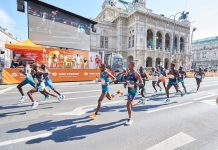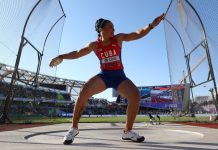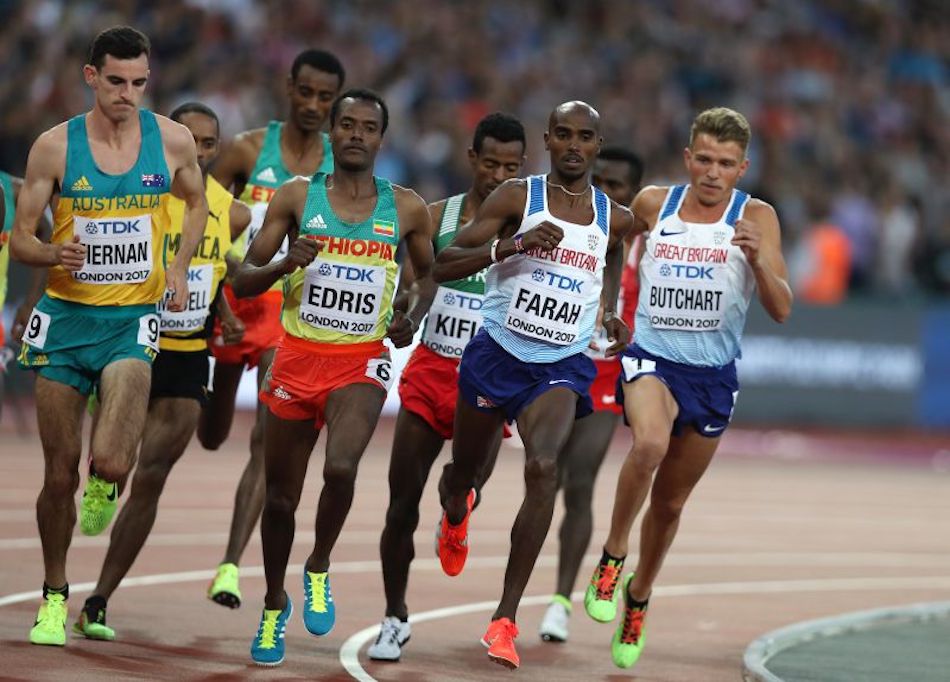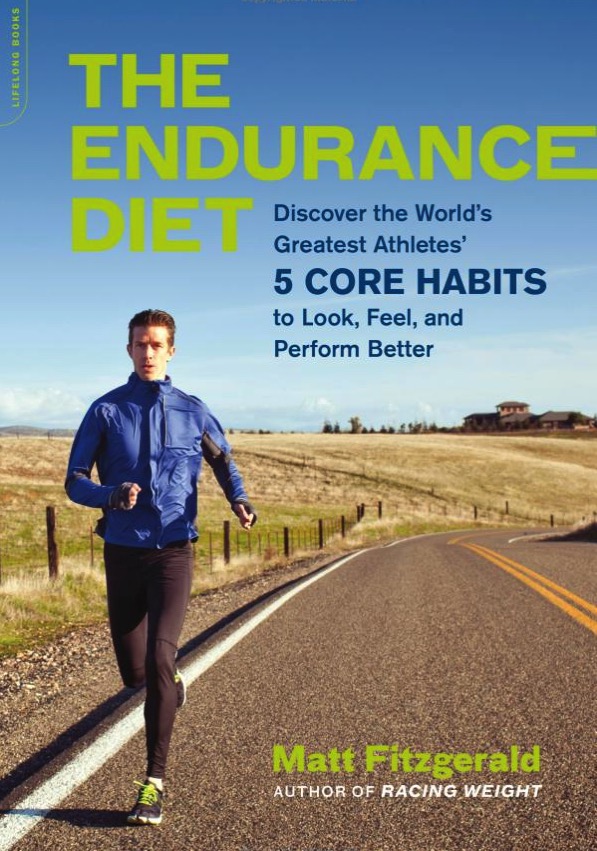MATT FITZGERALD – Runner’s Tribe
Matt Fitzgerald is an acclaimed endurance sports coach, nutritionist, and author. His many books include The Endurance Diet, 80/20 Running, and How Bad Do You Want It?
If you ask the average running coach what good running form is, he or she will probably answer with phrases like “midfoot strike,” “high stride rate,” and “low vertical oscillation.” It is true that these and other form characteristics are common in top runners and less common in slower runners. But there are exceptions. Meb Keflezighi won the 2009 New York City Marathon as a heel striker, Ryan Hall set an American record of 59:43 in the half marathon with an unusually bouncy stride, and Mo Farah won 10 Olympic and World Championships gold medals with an exceptionally low stride rate.
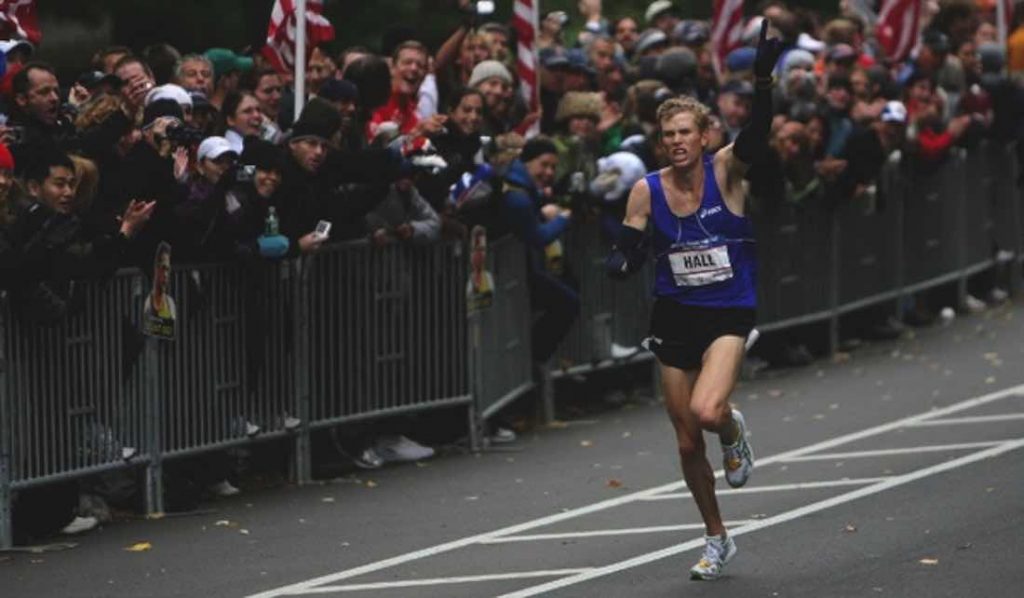
On the basis of the fact that no two champion runners run the same way, I would argue that no specific movement pattern defines good running form. What, then, is the true essence of good running form? One possibility is efficiency. This idea has a lot going for it. After all, what is it that you really want your running form to do as distance runner? Not maximize power–that’s for sprinters. Rather, you want your running form to minimize the energy cost of running so you can go faster and farther before you become exhausted. It doesn’t matter how you minimize the energy cost of running, biomechanically, but only that you minimize the energy cost of running. Obviously, some movement patterns are generally more efficient than others, which is why most of the best runners are midfoot strikers. Nevertheless, each body is unique, so we shouldn’t expect every runner to minimize energy cost in the same way.
As sensible as it seems to define good running form as that which maximizes movement economy in an individual runner, however, I think this definition misses the mark as well. The true definition of good running form, I believe, is the particular way of running that feels easiest to an individual runner. I can’t claim to have come up with this theory. I got it from Samuele Marcora, father of the psychobiological model of endurance performance. Here’s an excerpt from an email message Marcora wrote to me about his perception-based theory of biomechanics:
“Many specialists in this area. . . still think that the [central nervous system] controls locomotion to optimise energy. They envisage an optimal solution in which the CNS senses energy expenditure and adjusts locomotion parameters (e.g., step frequency) to minimise energy expenditure. There are some basic neurophysiological problems with this proposal. However, the biggest problem is that there are several instances in which the CNS chooses locomotion parameters that optimise perception of effort at the expenses of energy expenditure (e.g., walking to running transition). When energy seems ‘optimised’ this coincides with the optimal perception of effort as well. So perception is always optimised but energy expenditure is often not. The. . . conclusion is that the CNS optimises perception of effort rather than energy expenditure.”
Energy expenditure and perceived effort are closely linked. For the most part, movement patterns that reduce energy expenditure also make running feel easier. It is very likely that the evolutionary reason individual runners adopt the particular way of running they do is to minimize energy expenditure. But it is perceived effort that actually controls this process. In other words, running in the way that minimizes perceived effort is the means by which runners achieve the end of minimizing energy expenditure.
Consider what happens when you’re running along and you turn into a strong headwind. You hunch forward, don’t you? This natural adjustment reduces the surface area of your body and minimizes the energy cost of running into the wind. But the choice to hunch is made consciously, and what you are really doing as a living organism is trying to make running feel as easy as possible despite the headwind. What Marcora and I are suggesting is that this is what runners are doing all the time, although mostly in subtler ways not involving headwinds.
Perception of effort is tied to brain activity. In crude terms, the harder you have to think about your movements, the harder those movements feel. So your goal as a runner is to run as thoughtlessly and unconsciously as possible. This is why consciously changing the way you run is such a bad idea. No matter what you change, you will have to think more about what you’re doing because what you’re doing is unnatural, and this will make running feel harder.
This does not mean you are stuck with your current stride forever. Every runner’s stride evolves gradually over time as the CNS learns through repetitive practice how to move in ways that feel easier (and that usually also reduce energy cost). Consider something like running with a higher stride rate. If you force yourself to run with a higher stride rate right now, running will feel harder (if only very slightly) and you will probably also be less efficient because you have to think about what you’re doing. But guess what? If you just leave your stride alone and keep training, it is probable that your stride rate will increase somewhat over time, and this natural evolution will be associated with reduced perception of effort and likely also with increased efficiency. You have to earn your stride changes.
Evidence that thinking about your running is bad for your running comes from studies in which researchers look at the effects of attentional focus on running economy. A series of experiments conducted by European researchers has shown that runners become less efficient when they focus their attention internally versus externally, even if their internal attentional focus does not involve any effort to alter their running form. Let that sink in for a minute.
I only wish these researchers had measured the effect of attentional focus on perceived effort as well, because it is perception of effort, not physiology, that directly limits endurance performance. Becoming more economical doesn’t do a runner any good if this benefit comes at the cost of increased perception of effort, as no runner can run faster than he feels he can run. And based on his understanding of what good running form really is, Marcora believes it would be a mistake for runners to try to increase their economy through interventions requiring conscious form changes (i.e., internal attentional focus, i.e., thinking), even if these interventions actually worked. “What happens to perception of effort if we make people run in the way that gets the lowest energy expenditure?” he asked in our email exchange. “I bet it would go up considerably.” And when perceived effort goes up, performance goes down, because the definition of good running form is the particular way of running that feels easiest to an individual runner.
About the the author – MATT FITZGERALD
Matt Fitzgerald is an acclaimed endurance sports coach, nutritionist, and author. His many books include The Endurance Diet, 80/20 Running, and How Bad Do You Want It? Matt’s writing also appears regularly in magazines and on websites such as Women’s Running and competitor.com. His online training plans have helped thousands of athletes of all experience and ability levels achieve their goals. Certified by the International Society of Sports Nutrition, Matt has consulted for numerous sports nutrition companies and he is the creator of the Diet Quality Score (DQS) smartphone app. A lifelong athlete, he speaks frequently at events throughout the United States and internationally. Matt can be reached at matt@8020endurance.com.
Want a readymade or custom training program from one of the top coaches in the world. Follow this link: http://8020endurance.com/8020-run-plans/
80/20 training plans are provided via TrainingPeaks.com or FinalSurge.com. Both platforms offer comprehensive scheduling, logging, and analysis with outstanding web and mobile applications for all 80/20 plans. Our structured workouts plans, below, represent the latest training technology that makes completing a workout easier than ever. Structured workout run plans measure your intensity by either ![]() Pace,
Pace, ![]() Heart Rate, or
Heart Rate, or ![]() Power.
Power.





